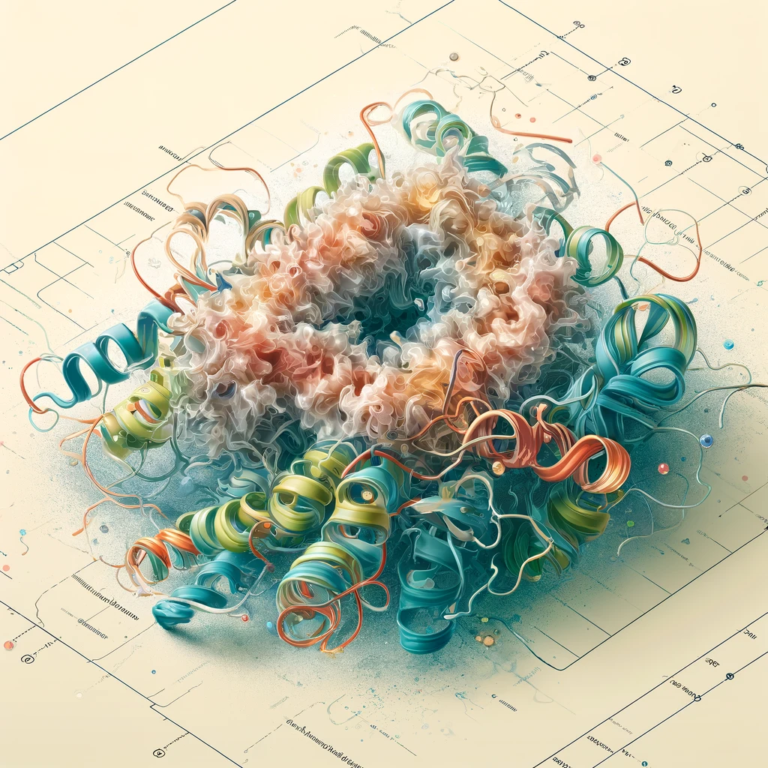Advances in Hyaluronic Acid: Structure, Function, and Applications
This review delves into the molecular structure of hyaluronic acid, its biomedical applications, and recent advances in manufacturing and transport, emphasizing its expanding importance in cosmetic and therapeutic settings.

Introduction to Hyaluronic Acid
Hyaluronic acid (HA), commonly known as hyaluronan, is a linear polysaccharide made up of disaccharide units containing N-acetyl-D-glucosamine and glucuronic acid (Kogan et al. 2006). It is a high molecular weight biopolymer with unique physicochemical features (Gupta et al., 2019). HA contains carboxylic and hydroxyl groups that allow for crosslinking, resulting in the production of stable polymeric structures (Withanage et al., 2021). This biopolymer occurs naturally in the human body and is essential in a variety of biomedical applications (Kogan et al., 2006).
HA’s distinctive qualities, including viscoelasticity, hygroscopicity, and rheological characteristics, make it useful in biomedical research (Domżalski & Migliore, 2022). It is renowned for its anti-inflammatory qualities and has been used to treat gingivitis (Mohammed et al., 2022). Furthermore, HA has been proposed as a biodegradable construct for tissue engineering applications (Birajdar et al., 2021).
The molecular weight of HA affects its structural, physical, physicochemical, and degradable properties (Snetkov et al., 2020). Different grades of HA have been examined for their mucoadhesive and penetration-enhancing properties, indicating potential for use in drug delivery systems (Sandri et al., 2004). HA has also been studied for its potential in periodontal research due to its numerous qualities in the medical and dentistry industries (Singh & Roy, 2021).
Hyaluronic acid’s molecular structure, natural presence in the human body, and importance in biomedical research make it a versatile biopolymer with numerous applications. Its distinct features have led to its employment in a variety of domains, including tissue engineering, drug delivery systems, and periodontal research, demonstrating its significance in biomedical science.
Applications of Hyaluronic Acid
HA has numerous applications in cosmetics, medicines, and tissue engineering. In cosmetics, HA is known for its moisturizing characteristics, providing benefits such as anti-aging and anti-wrinkle effects. Liu, et al. (2011). In pharmaceuticals, HA is used to treat aberrant immune function, cancer, inflammation, and other medical conditions such as ophthalmology, rheumatology, and dermatitis (Woo et al., 2019). HA is also used in dermatological fillers and viscosupplementation to treat osteoarthritis (Al-aroomy et al., 2022).
In tissue engineering, HA is regarded for its great biocompatibility, making it a popular choice for soft tissue fillers and an important component in biomaterial scaffolds (Zhu et al., 2019). HA hydrogels have been extensively studied for tissue engineering applications, as they provide a platform for cell-matrix interactions and tissue scaffold creation (Lam et al., 2014). Furthermore, HA-based hydrogels have demonstrated potential in vocal fold tissue engineering, showing advancements in regeneration procedures (Walimbe et al., 2017).
The use of HA in tissue engineering extends to cartilage tissue engineering, where marine gelatin-methacryloyl-based hydrogels containing HA serve as cell templates. Furthermore, HA-co-gelatin cryogels have been developed as injectable structures for tissue engineering applications, emphasizing the significance of minimally invasive approaches in this field (Rezaeeyazdi et al., 2018). Metacrylated HA-based bioinks are adjustable, allowing them to be used in stereolithography 3D bioprinting, proving HA’s adaptability in producing complex tissue structures (Rakin et al., 2021).
Hyaluronic acid’s numerous applications in cosmetics, medicines, and tissue engineering demonstrate its importance in a wide range of industries. Its unique qualities, such as high biocompatibility, moisturizing capabilities, and cell signaling functions, make it an important component in a variety of products and therapies, helping to develop medical treatments, regenerative medicine, and cosmetic formulations.
Recent Advances in Hyaluronic Acid Research
Recent advances in HA research have centered on novel modifications and production methods to improve delivery and biocompatibility for a variety of medicinal uses. Using HA-based composites, researchers investigated new techniques to increase medication release, tissue regeneration, and targeted therapy.
Liang et al. (2019) conducted a remarkable work in which they developed sticky hemostatic conducting injectable composite hydrogels with sustained drug release and photothermal antibacterial activity to promote full-thickness skin regeneration while wound healing. This study demonstrates the efficacy of HA-based hydrogels in wound care applications by integrating drug delivery, antibacterial characteristics, and tissue regeneration capabilities.
Another area of interest is the creation of HA-based composites for tissue engineering. Sergi et al. (2020) examined the state-of-the-art in bioactive glass/natural polymer composites, including HA, for scaffolds, injectable fillers, membranes, hydrogels, and coatings. These composite materials show promise for improving tissue regeneration and cell-matrix interactions in regenerative medicine.
Furthermore, recent research has examined the use of HA in medication delivery systems. Brown and Jones (2005) studied HA as a novel topical vehicle for localized drug delivery to the skin, emphasizing its potential for multiple routes of administration. This study expands the possibility for using HA as a carrier for therapeutic compounds in dermatology and other medical domains.
Furthermore, advances in cancer immunotherapy have been made with HA-based delivery systems. Wang et al. (2016) exhibited increased cancer immunotherapy by delivering anti-PD1 antibodies via microneedle patch, with the goal of improving immunotherapy efficacy for cutaneous neoplasms. This work demonstrates the promise of HA-based systems for targeted cancer therapy.
To summarize, recent research on HA modification and synthesis has resulted in substantial advances in drug delivery, tissue engineering, wound healing, and cancer therapy. These research demonstrate the adaptability and potential of HA-based materials for therapeutic interventions and regenerative medicine.
Reference
Al-aroomy, L., Alwadeai, M., Saleh, H., & Othman, A. (2022). Biomedical applications and effect of hyaluronic acid as a filler material. International Journal of Health Sciences, 5623-5647. https://doi.org/10.53730/ijhs.v6ns8.13558
Birajdar, M., Joo, H., Koh, W., & Park, H. (2021). Natural bio-based monomers for biomedical applications: a review. Biomaterials Research, 25(1). https://doi.org/10.1186/s40824-021-00208-8
Brown, M. and Jones, S. (2005). Hyaluronic acid: a unique topical vehicle for the localized delivery of drugs to the skin. Journal of the European Academy of Dermatology and Venereology, 19(3), 308-318. https://doi.org/10.1111/j.1468-3083.2004.01180.x
Domżalski, M. and Migliore, A. (2022). A review of the clinical effectiveness and safety of hybrid cooperative complexes in intra-articular viscosupplementation. Rheumatology and Therapy, 9(4), 957-974. https://doi.org/10.1007/s40744-022-00450-z
Gupta, R., Lall, R., Srivastava, A., & Sinha, A. (2019). Hyaluronic acid: molecular mechanisms and therapeutic trajectory. Frontiers in Veterinary Science, 6. https://doi.org/10.3389/fvets.2019.00192
Kogan, G., Šoltés, L., Stern, R., & Gemeiner, P. (2006). Hyaluronic acid: a natural biopolymer with a broad range of biomedical and industrial applications. Biotechnology Letters, 29(1), 17-25. https://doi.org/10.1007/s10529-006-9219-z
Lam, J., Truong, N., & Segura, T. (2014). Design of cell–matrix interactions in hyaluronic acid hydrogel scaffolds. Acta Biomaterialia, 10(4), 1571-1580. https://doi.org/10.1016/j.actbio.2013.07.025
Liang, Y., Zhao, X., Hu, T., Chen, B., Yin, Z., Peter, X., … & Guo, B. (2019). Adhesive hemostatic conducting injectable composite hydrogels with sustained drug release and photothermal antibacterial activity to promote full‐thickness skin regeneration during wound healing. Small, 15(12). https://doi.org/10.1002/smll.201900046
Liu, L., Liu, Y., Li, J., Du, G., & Chen, J. (2011). Microbial production of hyaluronic acid: current state, challenges, and perspectives. Microbial Cell Factories, 10(1). https://doi.org/10.1186/1475-2859-10-99
Machado, I., Marques, C., Martins, E., Alves, A., Reis, R., & Silva, T. (2023). Marine gelatin-methacryloyl-based hydrogels as cell templates for cartilage tissue engineering. Polymers, 15(7), 1674. https://doi.org/10.3390/polym15071674
Mohammed, I., Saleh, Z., & Hussein, V. (2022). Clinical and microbiological efficacy of hyaluronic acid gel compared to chlorhexidine in the treatment of gingivitis. Advanced Medical Journal, 7(1), 108-114. https://doi.org/10.56056/amj.2022.166
Rakin, R., Kumar, H., Rajeev, A., Natale, G., Ménard, F., Li, I., … & Kim, K. (2021). Tunable metacrylated hyaluronic acid-based hybrid bioinks for stereolithography 3d bioprinting. Biofabrication, 13(4), 044109. https://doi.org/10.1088/1758-5090/ac25cb
Rezaeeyazdi, M., Colombani, T., Memić, A., & Bencherif, S. (2018). Injectable hyaluronic acid-co-gelatin cryogels for tissue-engineering applications. Materials, 11(8), 1374. https://doi.org/10.3390/ma11081374
Sandri, G., Rossi, S., Ferrari, F., Zerrouk, N., & Caramella, C. (2004). Mucoadhesive and penetration enhancement properties of three grades of hyaluronic acid using porcine buccal and vaginal tissue, caco-2 cell lines, and rat jejunum. Journal of Pharmacy and Pharmacology, 56(9), 1083-1090. https://doi.org/10.1211/0022357044085
Sergi, R., Bellucci, D., & Cannillo, V. (2020). A review of bioactive glass/natural polymer composites: state of the art. Materials, 13(23), 5560. https://doi.org/10.3390/ma13235560
Singh, S. and Roy, R. (2021). Potential for hyaluronic acid in periodontal research.. https://doi.org/10.20944/preprints202102.0094.v1
Snetkov, P., Zakharova, K., Морозкина, С., Olekhnovich, R., & Uspenskaya, M. (2020). Hyaluronic acid: the influence of molecular weight on structural, physical, physico-chemical, and degradable properties of biopolymer. Polymers, 12(8), 1800. https://doi.org/10.3390/polym12081800
Walimbe, T., Panitch, A., & Sivasankar, P. (2017). A review of hyaluronic acid and hyaluronic acid-based hydrogels for vocal fold tissue engineering. Journal of Voice, 31(4), 416-423. https://doi.org/10.1016/j.jvoice.2016.11.014
Wang, C., Ye, Y., Hochu, G., Sadeghifar, H., & Gu, Z. (2016). Enhanced cancer immunotherapy by microneedle patch-assisted delivery of anti-pd1 antibody. Nano Letters, 16(4), 2334-2340. https://doi.org/10.1021/acs.nanolett.5b05030
Withanage, S., Savin, A., Nikolaeva, V., Kiseleva, A., Dukhinova, M., & Krivoshapkin, P. (2021). Native spider silk-based antimicrobial hydrogels for biomedical applications. Polymers, 13(11), 1796. https://doi.org/10.3390/polym13111796
Woo, J., Seong, H., Lee, S., & Jang, Y. (2019). Metabolic engineering of escherichia coli for the production of hyaluronic acid from glucose and galactose. Frontiers in Bioengineering and Biotechnology, 7. https://doi.org/10.3389/fbioe.2019.00351
Zhu, Y., Kruglikov, I., Akgul, Y., & Scherer, P. (2019). Hyaluronan in adipogenesis, adipose tissue physiology and systemic metabolism. Matrix Biology, 78-79, 284-291. https://doi.org/10.1016/j.matbio.2018.02.012



